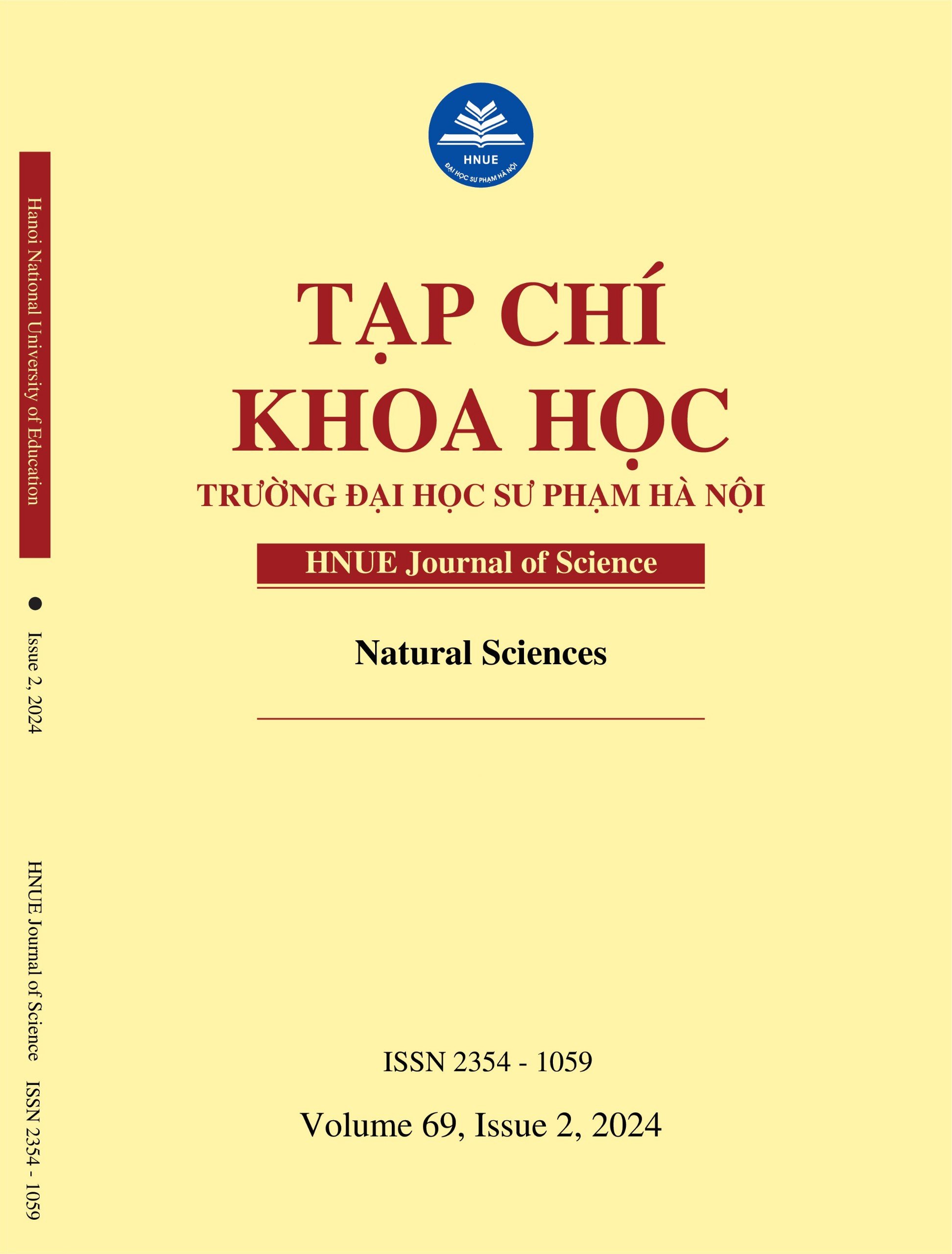EXPLICIT PSEUDO THREE-STEP RUNGE-KUTTA METHODSFOR NONSTIFF INITIAL VALUE PROBLEMS
DOI:
https://doi.org/10.18173/2354-1059.2024-0015Keywords:
Runge-Kutta methods, three-step methods, collagen peptide, sachi seed oil, emulsion, stability., parallelismAbstract
This paper investigates a class of explicit pseudo three-step Runge-Kutta methods for arbitrarily high order nonstiff initial value problems for systems of first-order differential equations. By using collocation techniques and by suitably choosing collocation points we can obtain a stable \(s\)-stage explicit pseudo three-step Runge-Kutta method (EPThRK method) of order \(p=2s\) requiring only one effective sequential f-evaluation per step on \(s\)-processor parallel computers. By a few widely-used test problems, we show the superiority of the new EPThRK methods proposed in this paper over red well-known parallel PIRK codes and efficient sequential ODEX, DOPRI5 and DOP853 codes available in the literature.
References
[1] Curtis AR, (1975). High-order explicit Runge-Kutta formulae, their uses and limitations. Journal of the Institute of Mathematics and its Applications, 16, 35-55.
[2] Hairer E, (1978). A Runge-Kutta method of order 10. Journal of the Institute of Mathematics and its Applications, 21, 47-59.
[3] Hairer E, Nørsett SP and Wanner G, (1987). Solving Ordinary Differential Equations I. Nonstiff Problems, (1st edition), Springer-Verlag, Berlin.
[4] Hairer E, Nørsett SP & Wanner G, (1993). Solving Ordinary Differential Equations I. Nonstiff Problems, (2nd edition), Springer-Verlag, Berlin.
[5] Burrage K, (1993). Efficient block predictor-corrector methods with a small number of corrections. The Journal of Computational and Applied Mathematics, 45, 139-150.
[6] Burrage K, (1993). Parallel methods for initial value problems. Applied Numerical Mathematics, 11, 5-25.
[7] Burrage K, (1995). Parallel and Sequential Methods for Ordinary Differential Equations. Clarendon Press, Oxford.
[8] Burrage K & Suhartanto H, (1997). Parallel iterated methods based on multistep Runge-Kutta methods of Radau type. Advances in Computational Mathematics, 7, 37-57.
[9] Nguyen HC, (1994). Parallel iteration of symmetric Runge-Kutta methods for nonstiff initial-value problems. Journal of Computational and Applied Mathematics, 51, 117-125.
[10] Nguyen HC, (1999). Explicit pseudo two-step Runge-Kutta methods for parallel computers. International Journal of Computer Mathematics, 73, 77-91.
[11] Nguyen HC, (1999). Continuous variable stepsize explicit pseudo two-step RK methods. Journal of Computational and Applied Mathematics, 101, 105-116.
[12] Nguyen HC & Mitsui T, (1997). A class of explicit parallel two-step Runge-Kutta methods. Japan Journal of Industrial and Applied Mathematics, 14, 303-313.
[13] Nguyen HC & Mitsui T, (2003). Parallel PC iteration of pseudo two-step RK methods for nonstiff IVPs. Japan Journal of Industrial and Applied Mathematics, 20, 51-64.
[14] Nguyen HC, Podhaisky H & Weiner R, (1998). Numerical experiments with some explicit pseudo two-step RK methods on a shared memory computer. Computational and Applied Mathematics, 36, 107-116.
[15] Nguyen HC & Hoang TV, (1995). An improvement for explicit parallel Runge-Kutta methods. Vietnam Journal of Mathematics, 23, 241-252.
[16] Nguyen HC & Le NX, (2003). Parallel-iterated RK-type PC methods with continuous output formulas. International Journal of Computer Mathematics, 80,1027-1037.
[17] Nguyen HC $ Le NX, (2008). Improved parallel-iterated pseudo two-step RK methods for nonstiff IVPs. Applied Numerical Mathematics, 58, 160-170.
[18] Nguyen HC & Le NX, (2008). Twostep-by-twostep PIRK-type PC methods with continuous output formulas. Journal of Computational and Applied Mathematics, 221, 165-173.
[19] Van der Houwen PJ & Nguyen HC, (1993). Parallel block predictor-corrector methods of Runge-Kutta type. Applied Numerical Mathematics, 13, 109-123.
[20] Van der Houwen PJ & Sommeijer BP, (1990). Parallel iteration of high-order Runge-Kutta methods with stepsize control. Journal of Computational and Applied Mathematics, 29, 111-127.
[21] Van der Houwen PJ & Sommeijer BP, (1992). Block Runge-Kutta methods on parallel computers. The Journal of Applied Mathematics and Mechanics, 68, 3-10.
[22] Kulikov GYu & Weiner R, (2010). Variable-stepsize interpolating explicit parallel peer methods with inherent global error control. SIAM Journal on Scientific Computing, 32, 1695-1723.
[23] Kulikov GYu & Weiner R, (2010). Doubly quasi-consistent parallel explicit peer methods with built-in global error estimation. Journal of Computational and Applied Mathematics, 233, 2351-2364.
[24] Nørsett SP & Simonsen HH, (1989). Aspects of parallel Runge-Kutta methods, in Numerical Methods for Ordinary Differential Equations. Proceedings L’Aquilla 1987, Lecture Notes in Mathematics, 1386, (Edited by A. Bellen, C.W. Gear and E. Russo), Springer-Verlag, Berlin.
[25] Schmitt BA, Weiner R & Jebens S, (2009). Parameter optimization for explicit parallel peer two-step methods. Applied Numerical Mathematics, 59, 769-782.
[26] Schmitt BA & Weiner R, (2010). Parallel start for explicit parallel two-step peer methods. Numerical Algorithms, 53, 363-381.
[27] Weiner R, Kulikov GYu & Podhaisky H, (2012). Variable-stepsize doubly quasi-consistent parallel explicit peer methods with global error control. Applied Numerical Mathematics, 62, 1591-1603.
[28] Nguyen HC, Explicit pseudo three-step Runge-Kutta-Nystrom methods, in preparation.
[29] Hull TE, Enright WH, Fellen BM & Sedgwick AE, (1972). Comparing numerical methods for ordinary differential equations. SIAM Journal on Numerical Analysis, 9, 603-637.
[30] Curtis AR, (1964). Tables of Jacobian Elliptic Functions Whose Arguments are Rational Fractions of the Quater Period, H.M.S.O., London. 16.







